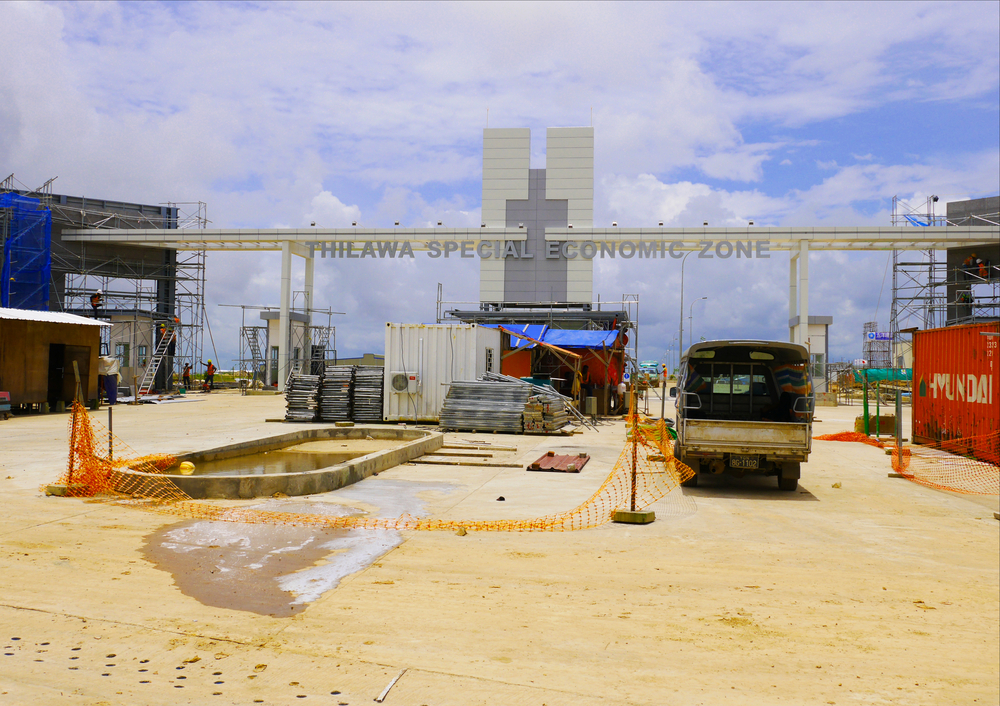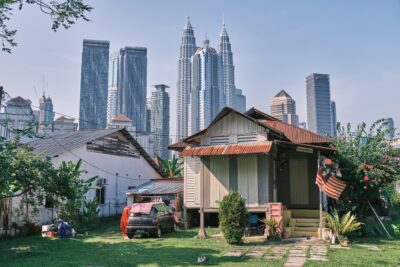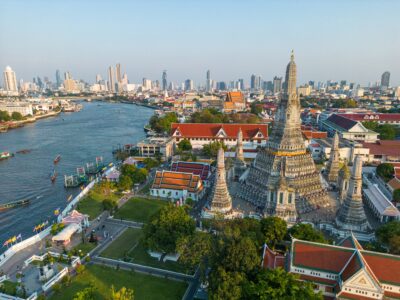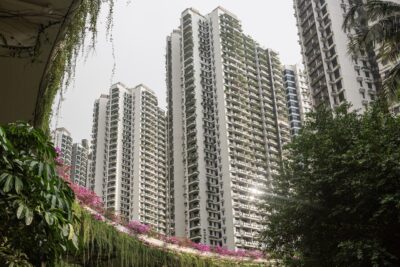Myanmar’s potential as a hub for industry supplies a glimmer of hope for real estate
“As many companies may consider switching their manufacturing facilities, existing industrial zones in Myanmar are anticipated to become enticing hotspots for investors”

Ten years ago, in Myanmar, if cash was king, condos weren’t far behind. Walk around Yangon today and the sight of half-finished real estate projects—abandoned or shrouded in green netting—tells of their devalued status.
Since the outbreak of the 2020 global pandemic, the woes of Myanmar’s flagging condominium sector have gotten worse, with sales stagnant and showing no signs of improving, analysts say.
The average selling price of residential property further declined in the first quarter from last year as competition among developers intensified, with many offering aggressive discounts.
Even when the pandemic abates, property consultancy Colliers expects the trend to continue as a large number of completed units come online. “As both buyers and developers have become more vigilant amid the volatile conditions, sales transactions in the city have remained low,” states a recent Colliers report.
The pandemic is accelerating the theme of delays, deferrals, and low sales that currently defines Myanmar’s residential market. Outstanding residential projects remain few and far between, with most developers trying to sell remaining stock rather than pushing for new launches. In the last quarter of 2019, the average take-up rate grew modestly to 61%, up by 3.6% and 5.5% on a quarterly and annual basis, respectively.
Even a long-awaited law passed mid-2019 to allow foreigners to own up to 40% of the units in a condominium project has yet to meaningfully boost demand. “Overall the situation hasn’t changed since last year, but has got worse with the pandemic,” relates Karlo Pobre, managing director of Colliers International in Myanmar.
Pobre says some developers such as Global Green Development Company and SCW Development have scrapped their residential offerings altogether to reposition their projects as either serviced apartments or office space. “We still don’t encourage developers to look into the luxury segment. That’s something they should be avoiding,” cautions Pobre.
Tony Picon, a property consultant, says the decline of Myanmar’s condominium market began shortly after its boom around 10 years ago. Back then, the condominium sector had gathered steam amid political and economic reforms that saw the release from house arrest of democracy figurehead Aung San Suu Kyi and a boom in the jade trade between Myanmar and Chinese merchants.
Many were getting rich from the gem, and where once they would have invested in cars and gold, they did so in condominiums. “It became an asset class for the wealthy. It didn’t really have any legs. It was just where people could park their money,” says Picon.
Unlike relatively well-functioning metropolises like Bangkok, Yangon still lacks all the ingredients necessary to sustain a healthy condominium sector. Says Picon: “All the pieces of the jigsaw were already in Bangkok for the condo market: a growing middle class, bank finance, people had office jobs and were able to get loans, and a good public transport system. All those factors that made Bangkok work are not really in Yangon yet.”

Many developers “just didn’t know what they were doing,” adds Picon. The tipping point came a few years into the boom, he shares, when delays over building regulations emerged and crippled some 120 projects, causing big problems for developers. Compounded by a slowing market, the delays “knocked the condo market on the head.”
Experts agree the condominium sector’s future lies in Myanmar’s more promising sectors, particularly the industrial category. Manufacturing had accounted for USD800m in foreign direct investment last year, the second largest recipient after transport and communications with USD1bn. Before the pandemic, Myanmar was expecting to pull in USD5.8 billion in FDI this year—up from last year’s USD4.5bn—on the strength of its manufacturing sector, which has been boosted by government efforts to cut red tape around investment while offering tax breaks and other incentives.
Companies have also been increasingly looking to leverage Myanmar’s low labour costs, which has given rise to 29 special economic zones in the past five years since he first one launched in Thilawa, outside Yangon. Aiding this has been a push to boost the country’s inadequate power supply, long considered a barrier to entry for many foreign manufacturers.
“As many companies may consider switching their manufacturing facilities, existing industrial zones in Myanmar are anticipated to become enticing hotspots for investors”
Thai industrial estate developer Amata Corp is planning a USD1bn project in Yangon featuring a 600-megawatt power plant. SembCorp’s Myingyan project in Mandalay, which launched in March last year and cost USD310m comprises a 225-megawatt plant.
Since the pandemic, the government has also expedited the process for project approvals as part of its emergency response plan. This, along with no sign of the China-US trade war abating, is expected to continue drawing companies to Myanmar to safeguard production and bypass tariffs between those countries.
“When it comes to relocation, Vietnam might be preferable, but it’s already congested. Investors are now eyeing Indonesia and Myanmar,” says Aung Naing Oo, permanent secretary at the Ministry of Investment and Foreign Economic Relations Myanmar.
Paul Ryan Cuevas, senior analyst at Colliers Myanmar, concurs: “As many companies may consider switching their manufacturing facilities from China after the crisis to avoid any future disruptions, existing industrial zones in Myanmar are anticipated to become enticing hotspots for investors and manufacturers.”
Picon reiterates that where Myanmar’s condo sector went wrong was that it preceded the development of the office, retail, and industrial markets. “Essentially development was back-to-front; usually the condo comes at the end when a broad middle class emerges,” he says. Once those sectors are established, with industry leading the way, the condo market might one day rise again.
This article originally appeared in Issue No. 161 of PropertyGuru Property Report Magazine
Recommended
Meet the vagabond architect behind India’s housing scene
Vinu Daniel is helping to shake up India’s home building setting
Where Asian real estate stands in a fragmented, warmer world
Asia’s real estate industry faces many and varied challenges as external factors continue to bite
6 sights to see in Singapore’s Marine Parade
Handily located Marine Parade has emerged as a vibrant investment choice in the Lion City
There’s a township dedicated to health and wellness in Malaysia
Property seekers have their health needs catered for at KL Wellness City








